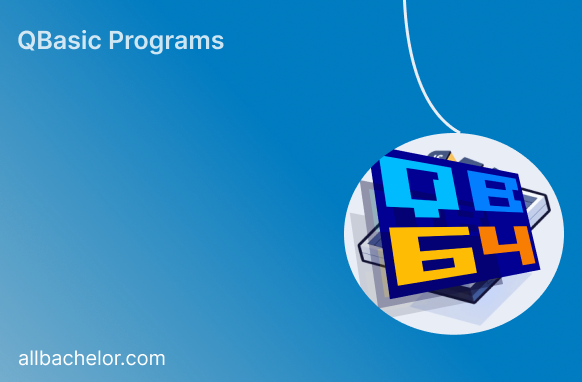What is QBASIC?
QBASIC is a programming language developed by Microsoft for beginners to learn programming concepts easily. It stands for “Quick Beginners All-purpose Symbolic Instruction Code.” QBASIC provides a simple and user-friendly environment for writing, executing, and debugging code. It was widely used during the 1980s and 1990s and remains popular among hobbyists and educational institutions.
Getting Started with QBASIC: Setting up the Environment
Before you start coding in QBASIC, you need to set up the environment. QBASIC typically comes pre-installed with MS-DOS, but if you’re using a modern operating system like Windows or macOS, you might need to find an emulator or an alternative QBASIC implementation.
Once you have QBASIC running, you’ll see an integrated development environment (IDE) with an editor where you can write your code and a runtime environment to execute it. Let’s dive into the basic syntax and data types of QBASIC:
1. Comments:
Comments are essential for code readability and to explain what your code does. In QBASIC, you can create comments using an apostrophe (‘) at the beginning of the line. Everything after the apostrophe will be ignored by the compiler.
Example:
'This is a comment in QBASIC
PRINT "Hello, World!" ' This will print the message2. PRINT Statement:
The PRINT statement is used to display output on the screen. It can print text, numeric values, and the results of expressions.
Example:
PRINT "Welcome to QBASIC!"
PRINT "The sum of 5 and 7 is"; 5 + 73. Variables and Data Types:
In QBASIC, variables are used to store data temporarily. You need to declare variables before using them. QBASIC supports various data types, including:
- Integer (INTEGER): Used for whole numbers (e.g., 10, -42, 0).
- Single-precision (SINGLE): Used for floating-point numbers with decimal values.
- Double-precision (DOUBLE): Used for double-precision floating-point numbers, providing higher precision than SINGLE.
- String (STRING): Used for storing text or sequences of characters within double quotes.
Example:
DIM age AS INTEGER ' Declare an integer variable
DIM pi AS SINGLE ' Declare a single-precision variable
DIM name AS STRING ' Declare a string variable
age = 25
pi = 3.14
name$ = "John Doe"
PRINT "Name: "; name$
PRINT "Age: "; age
PRINT "Value of Pi: "; pi4. Input from User:
You can take input from the user in QBASIC using the INPUT statement. It allows the program to pause and wait for the user to enter a value.
Example:
DIM name AS STRING
INPUT "Enter your name: ", name$
PRINT "Hello, "; name$; "! Nice to meet you."5. Basic Arithmetic Operations:
QBASIC supports standard arithmetic operations such as addition (+), subtraction (-), multiplication (*), and division (/).
Example:
DIM num1 AS INTEGER
DIM num2 AS INTEGER
num1 = 10
num2 = 5
PRINT "Sum: "; num1 + num2
PRINT "Difference: "; num1 - num2
PRINT "Product: "; num1 * num2
PRINT "Division: "; num1 / num2Conclusion
This beginner’s guide has introduced you to the essential syntax and data types in QBASIC. With this foundation, you can start writing simple programs and gradually explore more complex concepts. QBASIC is a great language for beginners to get started in the world of programming and develop a strong foundation for future learning. Happy coding!


